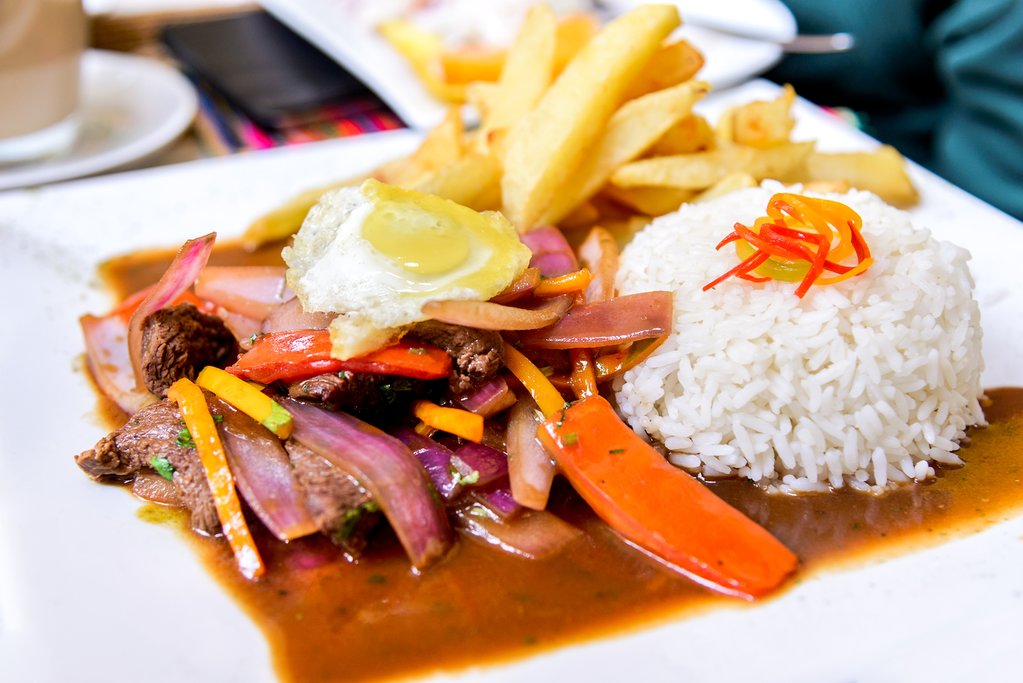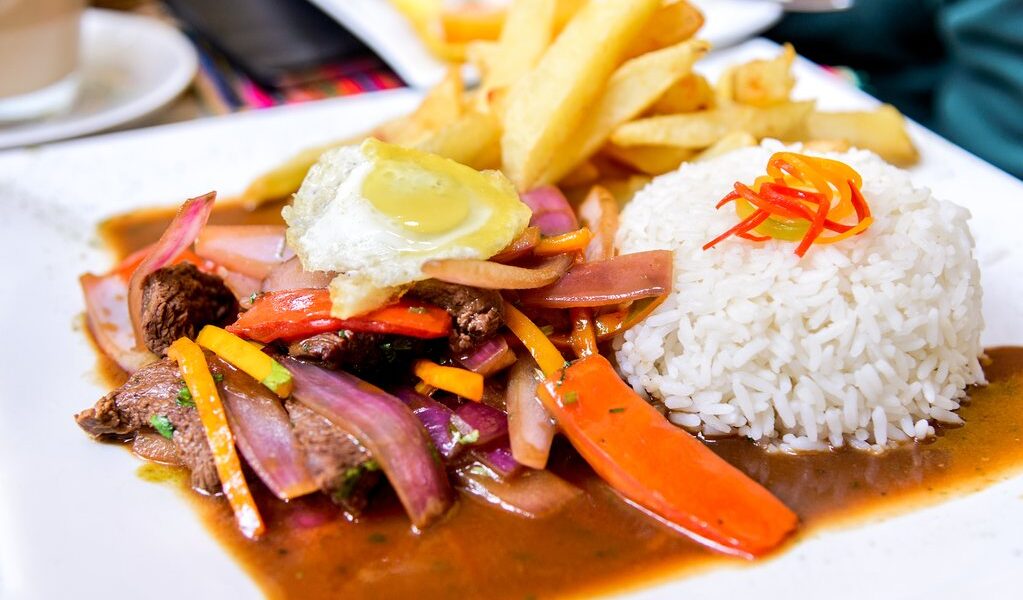
Peru’s cuisine has been hitting the headlines in restaurants around the world for a while now, and rightly so: its colorful, spicy takes on meat, fish, and potato dishes are one-of-a-kind. This journey into Peru’s fascinating gastronomy identifies the best of the must-try foods and the ideal places to sample them.
## A Culinary Journey Through Peru: A Guide to Must-Try Dishes
**Overview**
Peruvian cuisine stands as a vibrant testament to the nation’s rich cultural tapestry and remarkable biodiversity. Drawing influences from a diverse range of sources, including indigenous Peruvian traditions, Spanish colonial heritage, and even Chinese immigrant contributions, the culinary landscape of Peru is unlike any other in Latin America. The nation’s varied topography, encompassing towering mountains, lush jungles, and a vast coastline, provides an unparalleled bounty of ingredients that further contribute to the distinctive character and variety of Peruvian food.
Traditional dishes in Peru exhibit extreme regional variations. What might be a readily available culinary staple in one area could be met with confusion and blank stares in another. This fascinating phenomenon highlights the unique culinary identity of each region. Therefore, embarking on a gastronomic exploration of Peru requires a nuanced understanding of the local specialties and the best places to savor them. This article serves as your comprehensive guide to navigating the diverse world of Peruvian cuisine. It will illuminate the essential dishes to look out for during mealtimes in each of Peru’s primary geographic regions, providing recommendations on where to seek out the most exceptional examples of each culinary creation. Prepare yourself for an unforgettable culinary adventure through the heart of Peru.
**Ceviche**
Your international flight will most likely land in **Lima**, and this is a stroke of good fortune for your palate. The capital city is widely regarded as the epicenter of Peru’s national dish: ceviche. Ceviche is essentially fresh fish marinated in the tangy juice of limes. The high acidity of the citrus effectively “cooks” the fish, negating the need for any additional heat treatment. The traditional preparation involves using *corvina* (sea bass), a fish that thrives in the nutrient-rich Humboldt Current that flows along Peru’s Pacific seaboard.
Corvina lends ceviche its hallmark slightly sweet taste and readily absorbs the vibrant flavors of the other ingredients. Its delicate flesh also breaks easily into satisfying bite-sized pieces. While corvina is the classic choice, other types of seafood, such as trout and even shark, can also serve as a delicious base for ceviche. Typically, the marinated fish is combined with thinly sliced red onions, fragrant cilantro, and the fiery kick of *ají* (chili peppers). In Lima, ceviche is often accompanied by *choclo* (a large-kernelled white Andean corn), while in the highlands, it is served with chunks of sweet potato, providing a delightful contrast of textures and flavors. Ceviche is best enjoyed as a refreshing and zesty antidote to a warm day.
The experience of eating ceviche in Peru, as opposed to a Peruvian restaurant in another country, is truly special because of the prevalence of *cevicherías* (restaurants dedicated to serving ceviche). These establishments are a fixture in most coastal towns and are particularly abundant in Lima. Venturing out to a neighborhood like **Miraflores** or **San Isidro** at lunchtime, when ceviche is traditionally consumed, is something of a rite of passage in Lima. Join the throngs of business professionals as they flock to their favorite neighborhood cevichería to eagerly devour a bowl of this iconic dish. Be sure to ask for the *leche de tigre* (tiger’s milk) — the flavorful, spicy, and citrusy marinade that the ceviche was “cooked” in. It’s often served separately in a glass and is believed to have invigorating properties.
**Where to Eat**
Begin your ceviche journey at a upscale cevichería like **La Mar** in Miraflores, Lima. In Trujillo, be sure to seek out ceviche prepared with shark, a regional specialty. If your travels take you to the Peruvian Amazon, in cities like **Iquitos**, it’s worthwhile to sample ceviche made with river fish such as the dorado, known for its firm texture and delicate flavor.
**Lomo Saltado**
Lomo saltado, a culinary creation that seamlessly blends Peruvian and Chinese influences, is a beloved dish throughout the country. Introduced by Chinese immigrants who arrived in Peru in the mid-19th century, *lomo saltado* (stir-fried beef) features strips of *lomo* (beef, typically sirloin steak) marinated in a savory mixture of soy sauce and vinegar. The marinated beef is then stir-fried with a medley of colorful ingredients, including juicy tomatoes, crisp red onions, spicy ají peppers, fragrant cilantro, and a blend of aromatic spices.
Served alongside a generous portion of french fries and fluffy white rice, lomo saltado is a carb-rich and satisfying meal that can be enjoyed at any time of day – breakfast, lunch, and dinner. Its versatility and comforting flavors have made it a staple in Peruvian cuisine. The combination of tender beef, flavorful vegetables, and the contrasting textures of the fries and rice make for a truly delightful culinary experience.
**Where to Eat**
While lomo saltado is readily available along the coast and even in the jungle regions, it truly shines when enjoyed in the cool, crisp air of the Andes. There is no better place to be introduced to this iconic dish than in the captivating Andean city of **Cusco**. Simply wander through the city’s charming streets, and you’re sure to find lomo saltado prominently displayed on restaurant billboards, beckoning you to come in and savor its deliciousness.
**Papa a la Huancaína**
This classic potato-based dish originates from the Andean city of **Huancayo**, hence the name “Huancayo-style potatoes”. Even a first-time visitor to Peru will quickly become aware of the nation’s deep-seated obsession with the potato. The country boasts an astonishing array of approximately 4,000 different varietals.
For Papa a la Huancaína, *papas amarillas* (Peruvian yellow potatoes) are the preferred choice. These potatoes are boiled until tender and then generously coated in a creamy, cheesy sauce, creating a symphony of flavors. The dish is further enhanced with the addition of briny olives and slices of hard-boiled egg, adding both visual appeal and textural contrast. Served over a bed of crisp lettuce leaves, Papa a la Huancaína is often finished with a sprinkle of choclo, adding a touch of sweetness and another layer of texture.
**Where to Eat**
Although the popularity of Papa a la Huancaína has spread throughout the country, the most authentic and flavorful versions are undoubtedly found in its birthplace, Huancayo. Ask any local in Huancayo for their recommendation, and most will invariably point you to one restaurant in town that is renowned for serving the most outstanding Papa a la Huancaína: the atmospheric **Huancahuasi**.
**Juane**
Invented by indigenous tribespeople for sustenance during long river voyages, the *juane* is a portable and flavorful snack that is perfectly suited for travel on the Amazon River. Resembling a tamale, this unique dish consists of a delicious mixture of rice, chicken, and spices, all carefully wrapped in a jungle leaf called *bijao*. The bijao leaf is tied securely around the mixture, creating a neat and convenient package.
Inside, you will find rice mingled with meat or fish, slices of hard-boiled egg, black olives, and a blend of aromatic spices. The entire package is then steamed, allowing the flavors to meld together, resulting in a sticky, mouthwatering concoction. The name “juane” is derived from the Spanish version of John, in honor of John the Baptist. It is traditionally consumed on his feast day, June 24th. In addition to chicken, other common fillings include pork and freshwater shrimp, offering a variety of flavors to suit every palate.
**Where to Eat**
For an authentic juane experience, head to the vibrant **Mercado de Belén** (Belén market) in Iquitos. This bustling marketplace offers a wide selection of delicious juanes, prepared by local vendors with traditional techniques.
**Tacacho**
Another culinary specialty of the Peruvian Amazon is *tacacho*. This hearty dish is typically made by compressing smashed green or yellow plantains together with *cecina* (pork), pork fat, and a blend of spices into a compact mound. The mixture often incorporates rice and pieces of blood sausage, adding further depth of flavor and texture.
From the outside, the ocher-colored dish may appear to be on the dry side, but upon closer inspection, you’ll discover that it’s surprisingly moist on the inside. The name “tacacho” is believed to originate from the Quechua phrase *taka-chu*, which refers to the action of smashing up the plantains during the preparation process. This name serves as a reminder of the dish’s humble origins and the traditional methods used to create it.
**Where to Eat**
**Puerto Maldonado**, the gateway to Peru’s southern jungle, boasts some fantastic versions of tacacho in the recently opened restaurants. Try **Burgos’s Restaurant** for a delicious introduction to this Amazonian specialty.
**Pollo a la Brasa**
This roast chicken, bathed in a flavorful marinade of soy sauce, cumin, and red peppers, is such a ubiquitous Peruvian staple that it has gained international recognition and can now be found in restaurants around the world. Pollo a la brasa is one of the Peruvian dishes that has been successfully replicated internationally, bringing a taste of Peru to far-flung corners of the globe.
However, there’s truly no substitute for savoring pollo a la brasa in Peru. *Pollo a la brasa* (which translates literally to “chicken on the embers”) is one of the most commonplace foods in Peru. Even the smallest village typically has a *pollería* (chicken restaurant) where the smoky and succulent pollo a la brasa can be sampled. In Peru, it is almost always served with fried yucca, a delicious, waxy-textured Andean root vegetable that perfectly complements the savory chicken. In other parts of the world, you might find it served with fries, but for the authentic Peruvian experience, yucca is the way to go.
**Where to Eat**
Almost anywhere in Peru! Whether you find yourself on the coast, high up in the mountains, deep within the jungle, in a small village, or a bustling city, you’re guaranteed to find pollo a la brasa available in restaurants. For the most authentic and flavorful experience, seek out small, informal, hole-in-the-wall establishments, where the chicken is often cooked over open flames, imparting a smoky and irresistible flavor.
B-2110

